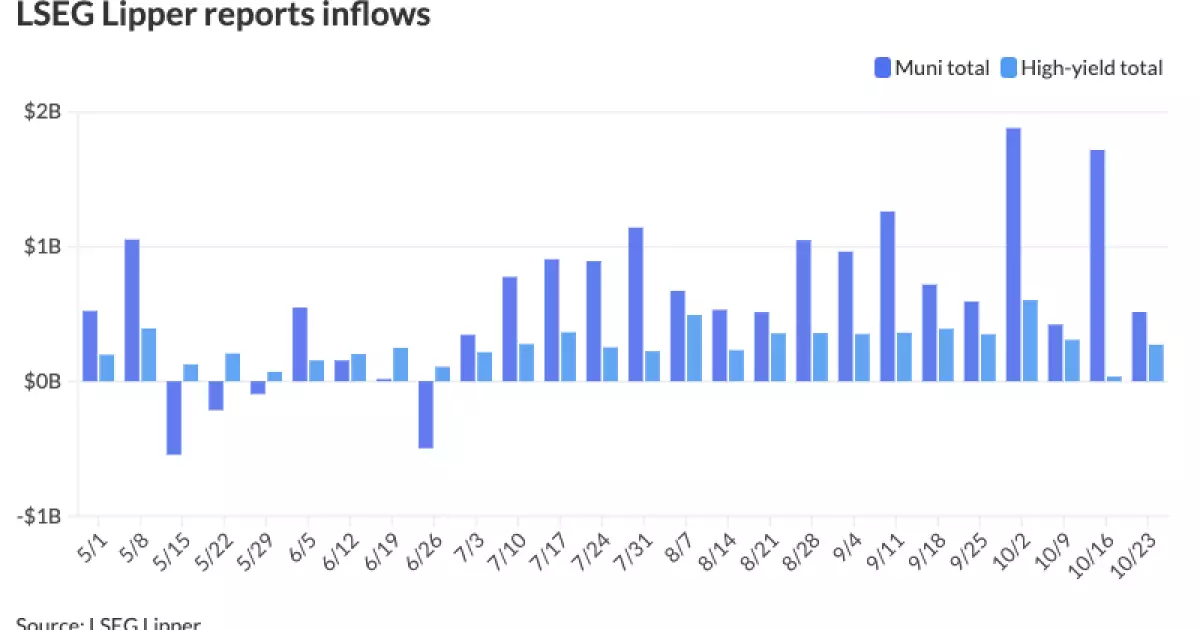As investors navigate the complex landscape of the municipal bond market, recent trends have provided both opportunities and challenges. Recent trading sessions have seen a notable shift as municipal bond yields experienced gains after a streak of rising yields. This shift indicates a response to various economic signals and regulatory expectations that could significantly influence market activity moving forward.
On Thursday, municipal bonds took a turn for the better, witnessing a reduction in yields across various maturities. This decline seemed to offset the four-day upward trend in yields, with decreases observed of up to seven basis points. For context, bonds are often influenced by broader market conditions, and the dynamic between municipal bonds and U.S. Treasuries remains noteworthy. U.S. Treasury yields also fell, albeit less dramatically, reflecting a slight easing in the overall interest rate environment.
The ratio of municipal to U.S. Treasury yields is often regarded as an indicator of value in the bond market. On Thursday, these ratios slightly decreased, indicating tighter spreads as yields adjusted. For instance, the two-year Muni-UST ratio settled at 66%, while the 30-year ratio stood at 87%, signaling a more competitive yield landscape for investors.
Despite experiencing some turbulence in returns amidst the changing economic conditions, the muni bond market has retained investor interest. The latest report from LSEG Lipper highlighted a net inflow of $514.7 million into municipal bond mutual funds for the past week, continuing a streak of 17 consecutive weeks of positive inflows. Interestingly, higher-yield bonds have drawn increasing attention, capturing significant inflows that nearly doubled compared to the previous week.
Market participants seem to be chasing returns, especially given that the positive returns observed from June to September have encouraged investments. However, the recent downturn in October, which led to losses of approximately 1.88%, has tempered overall year-to-date returns to a modest 0.37%. Analysts have pointed out that while economic indicators have recently shown signs of strength, including robust employment reports, this may have diminished some expectations of further Federal Reserve rate cuts.
The backdrop of the municipal market is bolstered by strong underlying fundamentals. With credit upgrades outpacing downgrades by a notable factor, sentiment towards credit quality remains favorable. However, the market has encountered less technical support due to increased bond issuance—estimated at over $418 billion year-to-date, marking a sharp rise of 41.1% from the previous year.
This surge in issuance stems from several factors, including a more stable inflation outlook and reduced federal aids, which have led state and local governments to leverage the municipal market. The prospect of addressing significant infrastructure needs further fuels this action, with estimates of deferred maintenance climbing into the trillions across sectors, including water utilities and higher education.
Looking ahead, many analysts anticipate that the upward trend in issuance will persist, driven by ongoing infrastructure demands. The perception of these bond sales as more than just a temporary reaction to the political calendar underscores the importance of sustaining investment in long-term priorities. High levels of supply in recent weeks have prompted robust responses in the market, indicating sustained investor appetite.
In addition, as certain deals continue to provide competitive income spreads, there is potential for future municipal bond sales to be met with enthusiasm. The market landscape may remain dynamic through the end of the year, particularly as issuers aim to capitalize on favorable conditions before the holiday slowdown.
The recent performance of municipal bonds amid shifting yields and changing economic indicators illustrates a complex environment for investors. While the strong fundamentals support continued investment, the technical realities of increased issuance and fluctuating yields offer challenges. Close monitoring of economic conditions and investor sentiment will prove essential as we move into the final months of the year, making this an exciting yet intricate time for stakeholders in the municipal bond market.


Leave a Reply